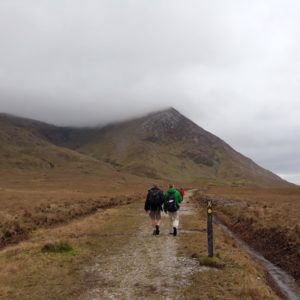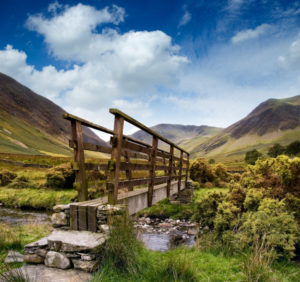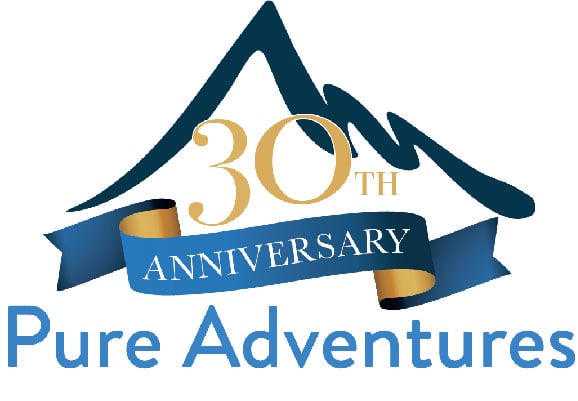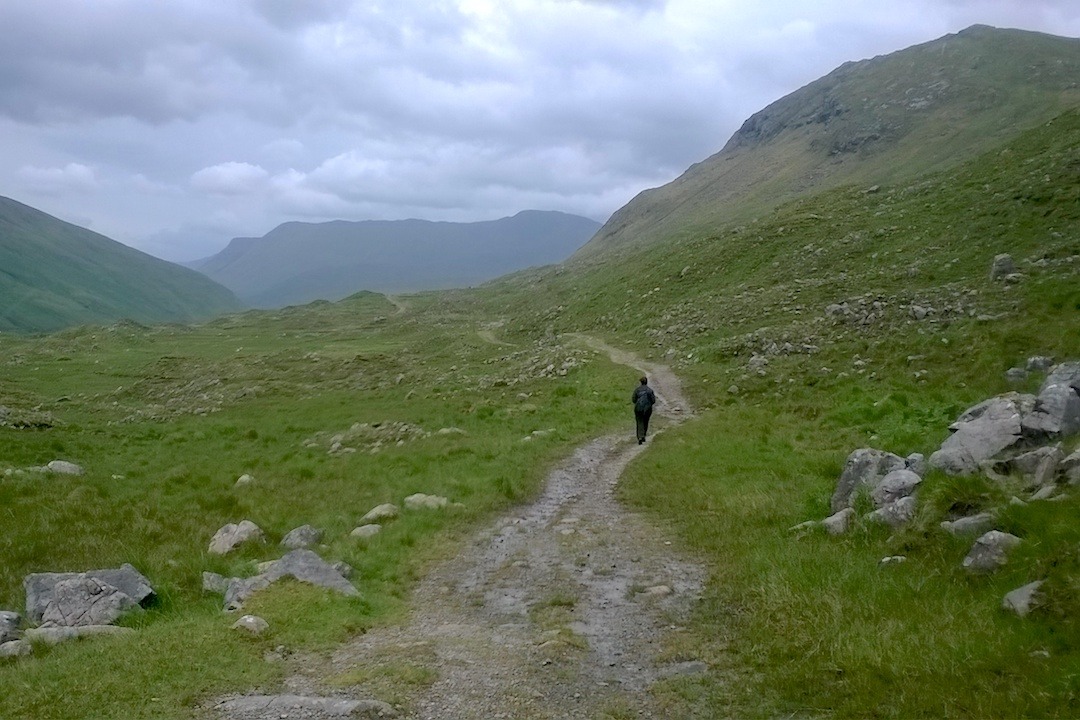If you’re a bit of an Anglophile, you’re probably prepared for the most common UK terms that cause confusion to the North American speaker – across the pond chips are crisps, an aubergine is an eggplant, and pants are underwear. Many of the differences are small, charming, and create a real sense of place for the unaccustomed ear. A less well-known usage a traveler would do well to understand, however, is the difference between the North American and British usages of “walking” vs. “hiking.”
 In North America, we tend to use “walk” in the same way we’d use “stroll” – a relatively easy excursion, usually along paved roads. We reserve the term “hike” for a more challenging trek through rugged terrain. The UK and the Republic of Ireland, however, use “walk” to describe any trip on foot, whether it’s to the corner shop or up the mountainside. Particularly if you’re talking to an older person, you may also hear the terms hillwalking, rambling, or fellwalking. When you get a hot tip at the pub about a lovely walk nearby, don’t set out in sandals until you’ve asked a few followup questions about length, difficulty, etc.
In North America, we tend to use “walk” in the same way we’d use “stroll” – a relatively easy excursion, usually along paved roads. We reserve the term “hike” for a more challenging trek through rugged terrain. The UK and the Republic of Ireland, however, use “walk” to describe any trip on foot, whether it’s to the corner shop or up the mountainside. Particularly if you’re talking to an older person, you may also hear the terms hillwalking, rambling, or fellwalking. When you get a hot tip at the pub about a lovely walk nearby, don’t set out in sandals until you’ve asked a few followup questions about length, difficulty, etc.
For instance, the tallest of the Connemara Mountains in Ireland, which we pass through on our Hiking the Western Way tour, reaches a maximum elevation of nearly 2,400 feet. Local guides may refer to the climb as a walk, or at most a “hard walk” or “hill walk.” All the same you’ll definitely want to bring hiking boots. Even less challenging stretches of trail may require appropriate preparations and footwear if the distances warrant. Especially at higher elevations, sunny weather can turn windy or misty on fairly short notice.
 So how best to prepare for a day or more of walking, Irish or UK style? Hiking boots as opposed to shoes will give you the best ankle support and be suitable for the broadest range of conditions. If you don’t intend to carry a ton of gear, though, you won’t need the stiffest, heaviest variety available, backpacking boots. Some hikers even prefer lightweight, low-cut trail runners for the comfort and speed they offer. Either way a good fit is very important, so when shopping around make sure you try your intended pair on at the end of the day after your feet have had time to swell, and while you’re wearing the type of sock you intend to bring with you. Avoid choosing a pair so tight they chafe, as you should still have room to wiggle your toes. Speaking of socks, those need to fit well too in order to avoid blistering. Choose a thickness appropriate for the season – thick enough to give you some comfy cushioning, but not so thick as to be sweltering on a warm day. Merino wool is the go-to material for most hikers, sometimes blended with synthetics for durability and faster drying.
So how best to prepare for a day or more of walking, Irish or UK style? Hiking boots as opposed to shoes will give you the best ankle support and be suitable for the broadest range of conditions. If you don’t intend to carry a ton of gear, though, you won’t need the stiffest, heaviest variety available, backpacking boots. Some hikers even prefer lightweight, low-cut trail runners for the comfort and speed they offer. Either way a good fit is very important, so when shopping around make sure you try your intended pair on at the end of the day after your feet have had time to swell, and while you’re wearing the type of sock you intend to bring with you. Avoid choosing a pair so tight they chafe, as you should still have room to wiggle your toes. Speaking of socks, those need to fit well too in order to avoid blistering. Choose a thickness appropriate for the season – thick enough to give you some comfy cushioning, but not so thick as to be sweltering on a warm day. Merino wool is the go-to material for most hikers, sometimes blended with synthetics for durability and faster drying.
The standard outdoorsperson advice also applies to hiking in the UK, of course. Layering a t-shirt, fleece top, and jacket allows you to peel off as you warm up or stay toasty when the weather turns. A brimmed hat and sunscreen will probably leave you feeling less fatigued at the end of the day, and a spare pair of socks never hurt. Snacks, water, and a fully charged phone are reassuring additions to any pack. Just be aware that cell reception can be spotty on some stretches of trail, so it’s always best practice to download map data in advance or bring a good old-fashioned paper map along.
 Lastly, if you’re referring to any guides written on hiking in the UK, you may want to make sure you’ve read them over in advance to make sure you haven’t glossed over any more unfamiliar terms (i.e. do you know a moor when you see one? Did you know a “permissive path” is a trail on private property which the landowner has granted access to?). If you travel with Pure Adventures, our local guides will bring you up to speed on anything you might need to know about trails or points of interest. Your job is to relax, enjoy the pastoral countryside and sweeping landscape, and then put your feet up after a long day’s ramble up hill and down dale.
Lastly, if you’re referring to any guides written on hiking in the UK, you may want to make sure you’ve read them over in advance to make sure you haven’t glossed over any more unfamiliar terms (i.e. do you know a moor when you see one? Did you know a “permissive path” is a trail on private property which the landowner has granted access to?). If you travel with Pure Adventures, our local guides will bring you up to speed on anything you might need to know about trails or points of interest. Your job is to relax, enjoy the pastoral countryside and sweeping landscape, and then put your feet up after a long day’s ramble up hill and down dale.
See all of Pure Adventure’s offerings in Ireland and the UK here.

